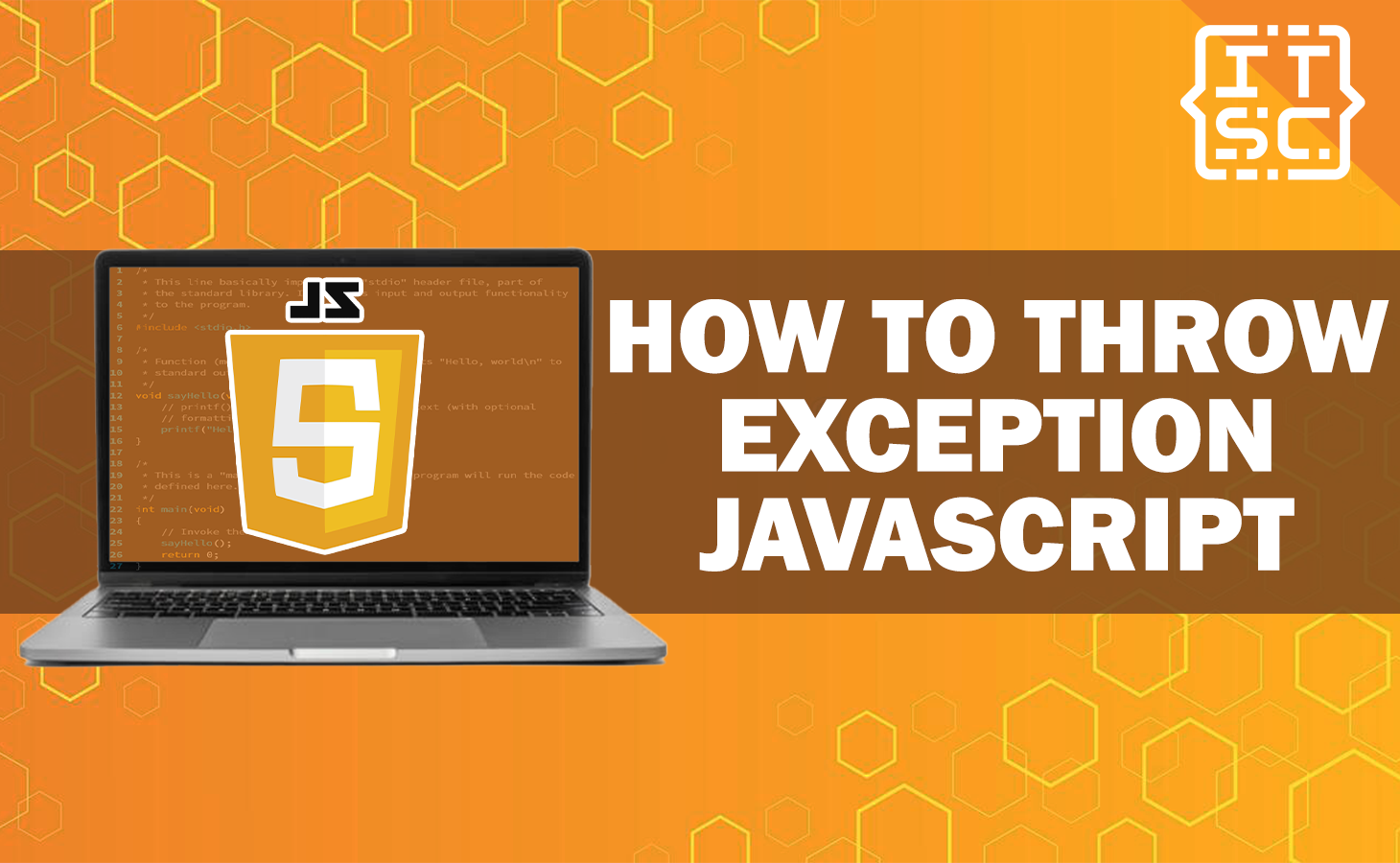In this article, you will learn of how to throw exceptions in JavaScript.
How to Throw Exception in JavaScript?
In JavaScript programming language, we can throw exceptions using the throw statement.
When we throw an exception, it prevents the normal flow of the program and jumps to the nearest enclosing try…catch block that can handle the different exception type.
Let’s discuss the methods in a step-by-step process:
1. Using throw Statement
The throw statement is used to easily throw an exception. It can take any expression as an argument, which will be the value of the exception thrown.
Here’s an example code:
throw "There is something went wrong!";
2. Using the try…catch Block
To handle exceptions, you should enclose the code that might throw an exception within a try…catch block.
The try block consists of code that you want to test for exceptions, and the catch block manage the exception when it occurs.
Here’s an example code:
try {
// A code that will throw an exception
} catch (error) {
// A code that handle the exception
}
3. Using finally Block
Alternatively, you can include a finally block after the catch block. The code inside the finally block will execute regardless of either an exception was thrown or caught. It is usually used for cleanup a tasks.
Let’s see an example code:
try {
// A code that will throw an exception
} catch (error) {
// A code that handle the exception
} finally {
// This is to cleanup a tasks
}
Understanding Error Types
There are various types of errors can occur in JavaScript. Understanding these error types is necessary for effective exception handling.
Let’s proceed to the common error types:
SyntaxError
A SyntaxError appears when there is a confusion in the code’s syntax.
For example:
throw new SyntaxError("There is a syntax error in your code programming.");
ReferenceError
A ReferenceError appears when a try is made to access a variable or function that is not declared or out of scope.
Here’s an example code:
throw new ReferenceError("The key is not defined.");
TypeError
A TypeError appears when an operation is executed on a data type that is not supported.
Here’s an example code:
throw new TypeError("This is cannot perform operation on null.");
Best Practices for Exception Handling
To make sure the powerful code and a smooth user experience, follow these best practices for exception handling in JavaScript:
1. Be Specific with Error Messages
When throwing exceptions, offer clear and specific error messages.
This helps developers determine the root cause of the problem quickly.
2. Avoid Overusing Exceptions
Only use exceptions for exceptional scenarios. Overusing exceptions for regular control flow can lead to performance problem.
3. Symmetrical Degradation
Always provide a symmetrical degradation structure when handling exceptions. Consider fallback options or user-friendly error messages.
4. Log Exceptions
Logging exceptions can be helpful for debugging and detailed constant issues in the application.
5. Test Exception Cases
Test your exception handling efficiently by creating test cases for different error cases.
FAQs
Yes, you can make custom exception objects in JavaScript by identifying your own exception class or extending existing ones like Error.
You can use multiple catch blocks to handle various types of exceptions in JavaScript.
Yes, you can re-throw an exception using the throw statement within a catch block.
No, the finally block is optional. It’s mainly used for cleanup tasks that require to be executed regardless of exceptions.
Conclusion
In this conclusion, exception handling is a critical expression of JavaScript programming that enable developers to handle errors effectively and ensure a smoother user experience.
In this article, you have learned how to throw exceptions using JavaScript, discussed the different error types, best practices for exception handling, and answered frequently asked questions.

